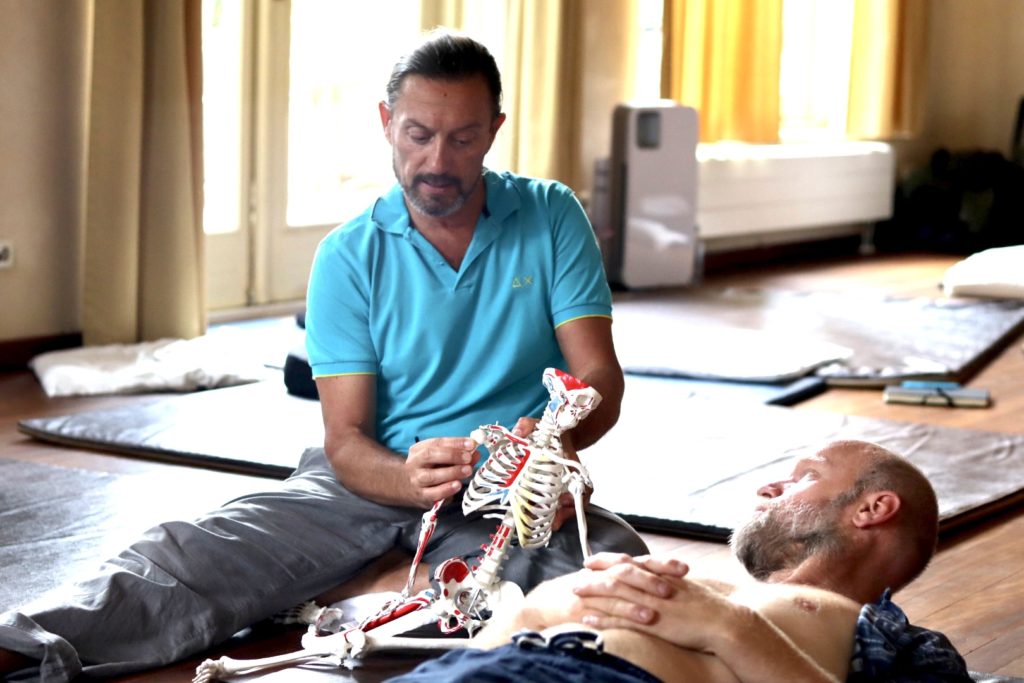[:en]

It is an essential and inspiring workshop for existing Thai Yoga Practitioners, Yoga Teachers and body workers to combine anatomy and TYM techniques that deepen the understanding of the breath and therefore allow practitioners to deepen their expertise.
We come into the world with a single breath and in the same way we leave it. To stay alive, all we need is the breath. As babies we know how to breathe but as we grow, parental and societal conditioning alter the quality of how we breathe. So many people in modern life suffer respiratory dysfunction.
But we are HOW we breathe
The way we breathe signals to the body what to expect:
when we shallow, rapid breathe, we remain in fight or flight, adrenal mode, which is toxic to the body.
Deep, relaxed breathing activates the parasympathetic system, our body relaxes knowing it is safe to repair, rest and digest.
ThIs course is open to all, but you will benefit most if you have already some bodywork experience. Ideal for Thai yoga massage practitioners, yoga teachers, massage therapists or anybody who want to improve their wellbeing and understanding of therapeutic breathing.
Program
The program for this course focuses on learning the following:
- Anatomy of the respiratory system.
- The relationship between the respiratory system, nervous system, and visceral system.
- Recoil techniques for the respiratory system.
- Structural opening techniques for the rib cage, shoulder girdle, and spinal movements.
- Techniques for opening the diaphragm and releasing upper chest muscles.
- Visceral work, which involves addressing the organs and their surrounding tissues.
- Hara detoxification techniques, which aim to promote detoxification and balance in the body’s core region.
By the end of the course, participants will have a thorough understanding of the respiratory system’s anatomy and its relationship with other bodily systems. They will also have learned various techniques for improving respiratory function, including opening up the rib cage, shoulder girdle, and diaphragm, as well as releasing tension in the upper chest muscles. In addition, participants will have learned how to incorporate visceral work and Hara detox techniques into their practice.
